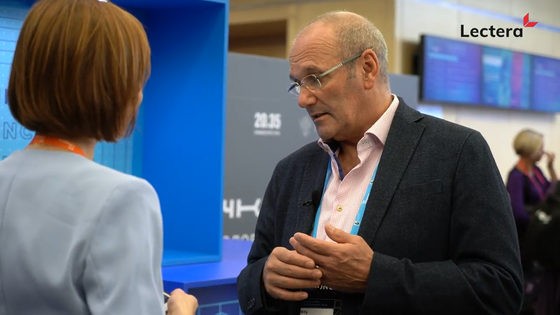Willy Wijnands, Founder of Dutch eduScrum Project, on the Future of Education
Willy Wijnands tells Lectera Magazine about the future education process and teacher training for future education programmes.

The founder of eduScrum Project, and a founding member of the international initiative called Agile in Education, Willy Wijnands is also a science teacher at Ashram College in Alphen aan den Rijn and Aikido. Having started his professional activity in 2000, Willy has trained over 900 teachers around the world since 2011. With eduScrum students become owners of the learning process in all their classes. Using eduScrum, they work together in an active, efficient and focused manner.
- Are there any results of using EduScrum in the education process yet?
I am the founder of eduScrum but I am still a teacher. So, I am a teacher since 1976, and I love my teaching and in 2011 I started as eduScrum. As you say it's just very young and the results, the data are coming from universities in Germany, in the US. I think that also a lot of data are coming from the Russian schools we teach but it is not yet collected to comment together. I didn't know my results only for my own reflection in 2013 and the results of these questions were very good. The students also love it, they discover their qualities and flaws and they grow as a person. First, the personal growth was very good, and, based on my results, in my classrooms the scores are five to ten percent higher than normal scores. But that is my result, that is not a real research. The data are a little bit coming; it's coming up, it's being collected from all over the world. But I can make research work, really, because it is my project, so it is coming.
- How does your team make EduScrum method generally available? Do you provide any training?
Normally, I give a two-day training, in the Netherlands I gave a two-day training, all over the world I give two-day trainings, and sometimes a one-day training, and the rest is an online training. Besides my work, I still teach for three days a week: Monday, Tuesday, Wednesday, and the other days I do this work, I'm here. Now, this Wednesday I got free to come here, and my students are working for themselves, so there's no problem. Now, about implementing the methodology: I go to another country I teach the teachers there and the teachers teach other teachers there. Once a month we have a reflection about how it works and what we do.
- Can eduScrum be used at the free state education level, or is it only suitable for public schools (fee charging schools) and universities only?
Typically, we can use it for public schools, for private schools also. For instance, last year I trained 30 teachers in August 2015, 30 teachers from public schools. And my Russian team - four out of four trainers - they train other teachers all over Russia, mostly in public schools. I just trained at Macaron school in Moscow and we trained at president School in Moscow. These were private schools. But when I train at a private school I say as a criterion that they invite also public schools, making it a mix. But yes, basically you can use this methodology for everything.
- Do children, who started studying under the eduScrum method early on, need to continue using it at the university?
It's the best when you can start with little children who are eager to learn. When you have teens from 14-15 years old, that is more difficult. University teachers and also students are working with this methodology and it is implemented slowly because the mindset of the old-school teaching still exists. It takes a lot of years to get rid of it but also there are good things in it. What I see now is that my students go to university and a few months ago I got messages from two students that they got a job - thanks to eduScrum because they had an eduScrum teacher.
- What's the best age to start studying under this method?
I started with junior-high and high school students from 11 until 18-19 years old, then I went to the bachelor schools and universities. Now we also teach students from the elementary schools. We started with the highest group from 11, then 10, 9, 8 years old, and last year we started with students who are 8, 7, 6, 5 years old. In Russia you see a lot of examples that young students do great work, it is great what you see here.
- How do you convince parents of EduScrum's benefits?
There's always a challenge when the adults don't trust children and when the teacher is doing it the old-school way. But the first thing is to give trust to your children and then you see what's happening. Also, you can always get back to your old critical teaching. When you have a school as a part of innovation, "new" teachers and classical teachers, I think the classical teachers will slow down. But sometimes they don't want to change, they are fighting. That's what you asked in the beginning. They say: "I need the results, what are the results?" And I say: "Go to my students and these are the results. There are happy students, they work hard. I don't give homework - they do it by themselves».
- It is hard for children to be so responsible? Is EduScrum about responsibility, as well as studying?
Yes, it's about responsibility, accountability, it's about communication, about trust. It's about taking responsibility as a person. Students talk about it in a different language than we, adults or teachers, do. The students talk more directly. When I use the same words as my students do to interact with each other, I get a problem with the parents or whatever. So, the students correct themselves.
It is about the four very important things: about collaboration, communication, about creativity, and about critical thinking. These four is what we need for the future, we need this kind of stuff for the future, not the knowledge. You take your cell phone, you type what you want to know, then you get it on Google - that's easy! Twenty years ago, a teacher was the only source of knowledge. Now, a source of knowledge is not only a teacher, it is, for instance, your cellphone or whatever. But a teacher has to teach students how to interact, why it is important to work together.
Share this with your friends via:
Latest News

A significant stage in the development of the alternative education system has begun in West Northamptonshire in the UK: the County Council is actively calling on parents, guardians, and trustees to participate in shaping the future of this key area.

Outwoods Primary School in Atherstone, Warwickshire, having experienced deep sadness after the loss of their famous cat, Silla, has found solace in a new pet – a Maine Coon named Aloysius O’Hara.

In modern universities, artificial intelligence, and in particular ChatGPT, is rapidly transforming from a controversial tool into a full-fledged student assistant.

An innovative educational project is gaining momentum in UK primary schools, aiming to change attitudes towards video games.

The Massachusetts Institute of Technology (MIT) presents MIT Learn – a revolutionary online platform that opens a “new front door” to access university knowledge and resources.












 Test. How Should You Spend the Winter Holidays?
Test. How Should You Spend the Winter Holidays?
 How the Christmas Tree Became the Symbol of the New Year: From Pagan Groves to Sparkling Ornaments
How the Christmas Tree Became the Symbol of the New Year: From Pagan Groves to Sparkling Ornaments
 How to Keep New Year’s Resolutions: A Detailed Guide to Real Change
How to Keep New Year’s Resolutions: A Detailed Guide to Real Change
 Test. What Winter Dessert Are You?
Test. What Winter Dessert Are You?
 Test: What Kind of Ancient Goddess Are You?
Test: What Kind of Ancient Goddess Are You?
 Test: Which Great Woman Would Invite You for Tea?
Test: Which Great Woman Would Invite You for Tea?
